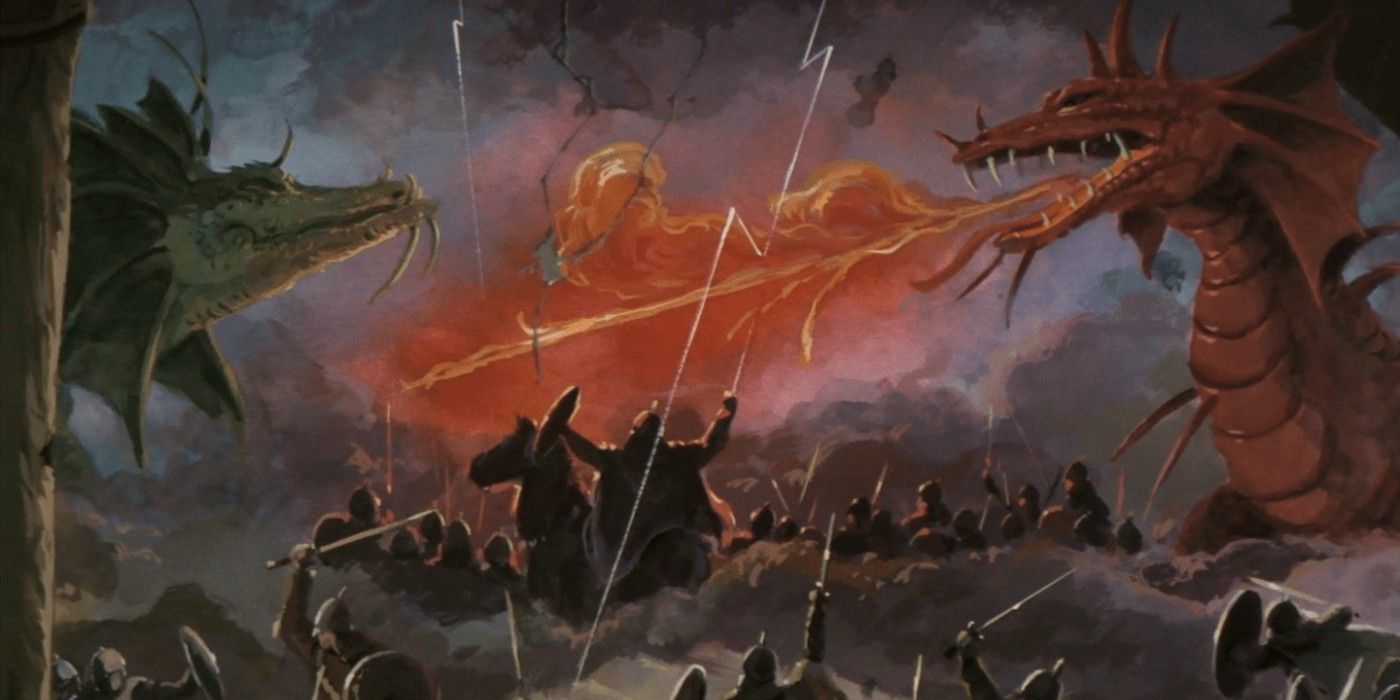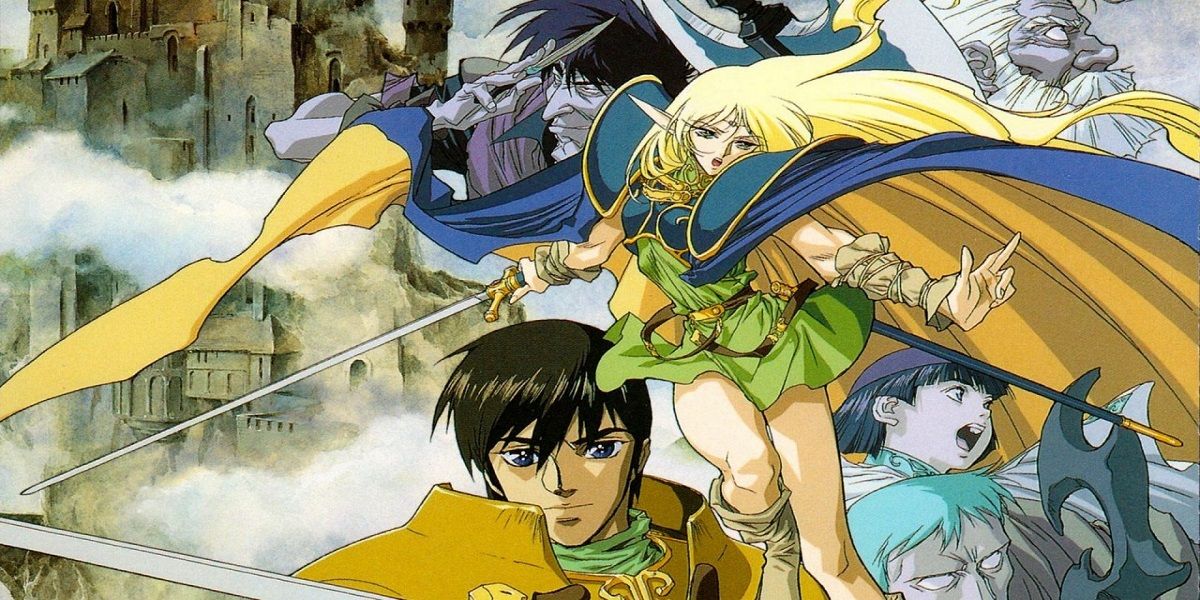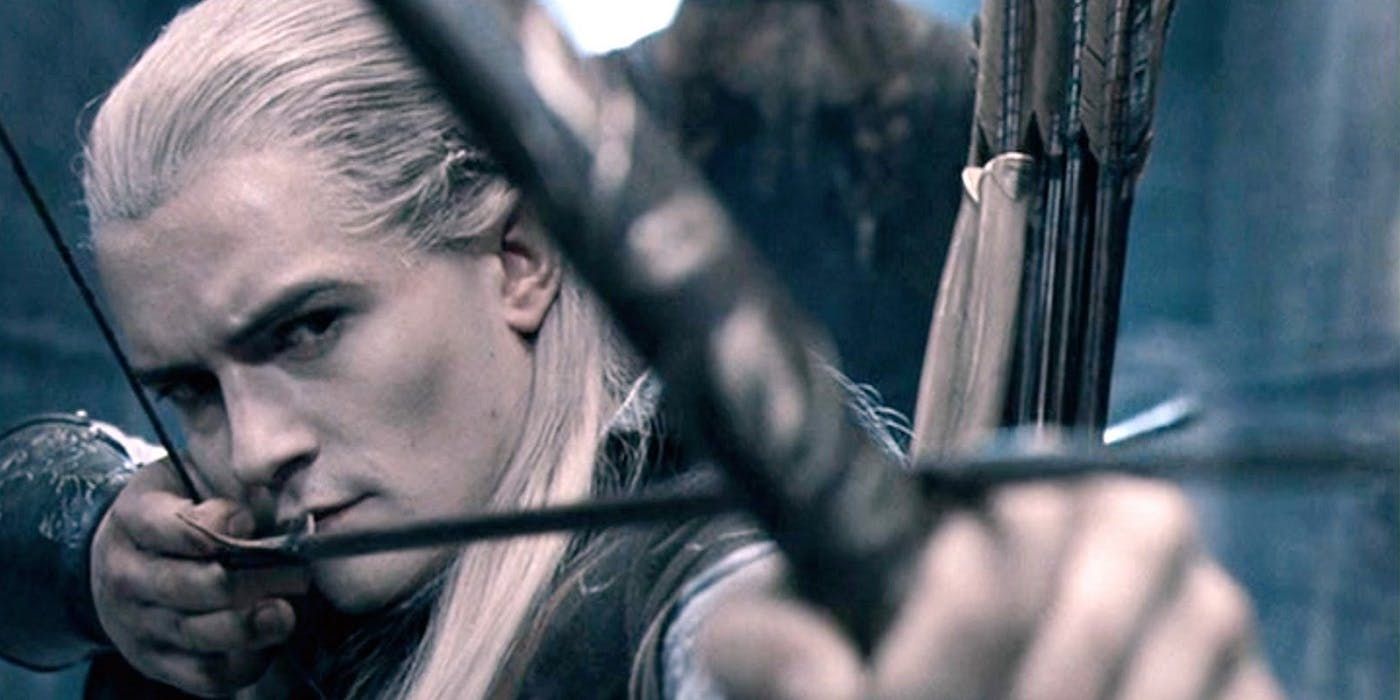Record of Lodoss War Saga Continues
Record of Lodoss War, the grandfather of fantasy anime, celebrates its 30th anniversary on June 30. Originally released in 1990, the OVA series has inspired countless others to follow in its path, set the standard for western fantasy in Japan, and has produced several sequels and spinoff series. Stepping back in time reveals the extent of the series' legacy and its influence on modern fantasy.
The original Record of Lodoss War series from Madhouse Studios is a 13-episode romp through a Lord of the Rings-esque fantasy involving the prerequisite troupe of knights, elves, dwarves and thieves as they do battle against an overbearing evil. Before becoming a hit series, Record of Lodoss War lit up the literary world as transcripts and novels adapted from creator Ryo Mizuno's Dungeons & Dragons sessions. Together with his friends, including a famed Japanese author, these sessions would lay the framework for what would become an epic franchise. From humble table-top roots, Record of Lodoss War quickly became a high watermark for Japanese fantasy.
A Dungeons & Dragons Tale

In 1986, Ryo Mizuno, who had been running sessions of Dungeons & Dragons with a group of friends, began publishing transcripts of these adventures in Comptiq, a Japanese computer game magazine. That same year, Mizuno joined founder Hitoshi Yasuda in launching Group SNE, a production studio for roleplaying games.
Dubbed Record of Lodoss War, the campaign followed Parn, a fighter, Deedlit, a female elf (played by the science fiction author Hiroshi Yamamoto), the dwarf Ghim, the thief Woodchuck, Etoh the cleric, and Slayn the wizard, as they embarked on a journey to rid Lodoss Island from an all-powerful evil. The scripts of Mizuno's sessions became immensely popular with readers. Dubbed "replays," these table-top adventures were simply logs of events and dialogue that took place at the table. Mizuno would take the leap from transcripts to novelization in 1988, bridging the gap between magazine subscribers and the literary world at large.
As the serializations grew in popularity, they took on a life of their own, which lead to Group SNE developing its own role-playing system known as Sword World RPG. These custom rules allowed aspiring role players to enter the world of Forcelia, where Lodoss Island exists, and to take part in similar adventures as Mizuno and Yasuda had organized. As Dragon Quest and The Legend of Zelda created a thirst for role-playing video games in the late 1980s, Record of Lodoss War offered a unique, hands-on alternative.
In 1990, the Record of Lodoss War novels received an anime adaptation. Madhouse Studio produced the 13-episode series for home video release, adapting most of the original story as experienced in the D&D sessions. The series became a hit and went on to shape the face of fantasy in Japan.
Record of Influence

Record of Lodoss War took a concept that had previously been defined by J.R.R. Tolkien's Lord of the Rings and gave it a unique twist -- starting first and foremost with its character design. Artist Nobuteru Yūki gave each character an individualized look that was both glamorous and practical, based on artist Yutaka Izubuchi's illustrations for the novelizations.
Deedlit, arguably the most famous character to have sprung from the series, is a high elf. Her ears are long and slender and her feet are light. Her armor is thin but carries an air of whimsical royalty. Her command over the elements and her expertise with a sword are unparalleled, portrayed in her wisp-like fluidity. In 1990, her appearance became iconic and set the standard by which anime depicted elves. In modern anime, her influence can still be seen; from Berserk to Queen's Blade, elves post-Record of Lodoss War more often than not carry long, slender ears in a similar fashion as Deedlit.
As fantasy as a genre began to inundate the Japanese landscape, others followed in its footsteps. In 1989, author Hajime Kanzaka released the first Slayers light novel. Group SNE's Forcelia would receive further exploration as well in Legend of Crystania and Rune Soldier. The 1990s offered more than a handful of fantasy series riding the wave of the genre's popularity from parody -- Sorcerer Hunters, Those Who Hunt Elves -- and beyond.
Yūki's style would continue to appear throughout the 1990s. In 1994, his character design gave The Vision of Escaflowne its stylish flavor and in 1999, he contributed to the video game Chrono Cross.
In 2018, Mizuno returned to the world of Lodoss for the 30th anniversary of the light novels, penning a new story that was published by Kadokawa Shoten. Along with the novel came a re-release of the original Record of Lodoss War RPG and a side-scrolling video game from Team Ladybug.
A Lasting Legacy

The series' classic take on high fantasy may have introduced Japanese audiences to western concepts of the genre, but for western audiences, the series may have introduced Japanese animation itself.
Upon Record of Lodoss War's release via home video in Japan, a dub arrived in the US via the Sci-Fi Channel's "Saturday Anime" programming block. The first three episodes aired in continuous rotation alongside the likes of Akira. In 1998, a more faithful adaptation of the original novels was given the anime treatment in Record of Lodoss War: Chronicles of the Heroic Knight. The series followed the stories closer than the OVA did and introduced Spark, a spunky young wannabe knight, who was the focus of the later Lodoss War stories.
In 2014, Kadokawa Shoten produced Meshimase Lodoss-tō Senki: Sorette Oishii no?, a Record of Lodoss War parody series in which a group of high school thespians work to put on a stage play based on the series. Two years later, an MMO based on the series was launched.
Mizuno began publishing Record of Grancrest War in 2013 and later would release a sourcebook for the role-playing game based on the light novels. In 2018, the series received an anime adaptation leading some to believe that it, too, shared the Forcelia setting. While not set in the same universe as Lodoss War, the series was a welcome return to Mizuno's brand of high fantasy.
Fantasy for the Masses

Peter Jackson's Lord of the Rings trilogy began its dominance of the fantasy landscape in 2001, introducing the concept of elves and dwarfs to an entirely new generation of fans. As popularity skyrocketed, anime fans returned to Lodoss Island, rediscovering a nostalgic relic of the early days of fantasy in anime.
Three decades on, Record of Lodoss War's presence can be seen wherever an elf pokes its ears. As the progenitor of fantasy anime, Lodoss War continues to be the standard-bearer by which modern anime is compared; it's lasting impression a ringing endorsement.
Source: https://www.cbr.com/record-of-lodoss-war-anime-fantasy-classic-30-anniversay/
0 Response to "Record of Lodoss War Saga Continues"
Enregistrer un commentaire